7 Best PA Speakers - 2024
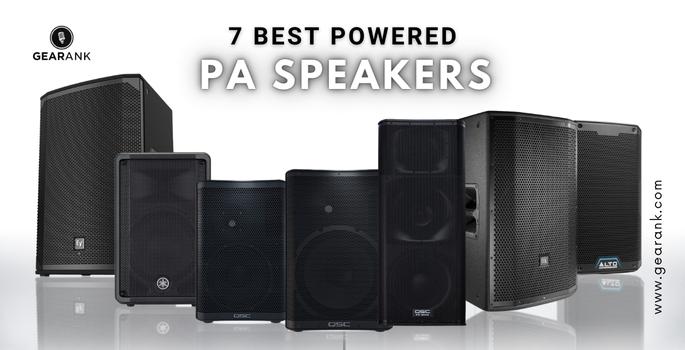
Author & Contributors
Raphael Pulgar
I've been an audio engineer for 20 years specializing in rock and metal recordings. I also play guitar and produce original music for my band and other content creators.
Best Budget PA Speaker
Alto Professional TS408 2000W 8
Cons
- No adjustable tone controls that could manually adjust on the speaker
- EQ profile could be a bit better, but for the price this is a really great speaker
Pros
- Plenty of power and range for average size building
- Durable and sturdy. Easy to pack, haul, hookup and position quickly
- Used for about 6 hours total run time. No issues with overheating or degraded sound quality over time
- Very good bass without a sub. Connecting to the speakers and pairing them was easy
The Alto Professional TS408 is a powered speaker with a 2,000-watt output, an 8-inch woofer, a 1-inch ceramic driver, Bluetooth connectivity, and a 3-channel mixer. It is part of the Truesonic 4 series, designed to provide modern features and technology for stage-ready performance.
The TS408 is an excellent choice for musicians, DJs, and sound engineers due to its many advantages. It offers a powerful and clear sound that can easily fill up a medium-sized venue, thanks to its frequency response of 50 Hz to 20 kHz and a maximum SPL of 128 dB12. Users appreciate the speaker's excellent clarity, punchy bass, and crisp vocals. Additionally, it has a lightweight and compact design that makes it easy to transport and set up, weighs only 23.6 lbs., and features ergonomic handles for carrying. The speaker is also durable and sturdy, with a rugged wood cabinet that protects it from damage during transport and use. It can be used vertically or horizontally as a main speaker, floor monitor, or side fill. Furthermore, it has a built-in fan that keeps it cool and prevents overheating, allowing it to handle long hours of use without any sound quality or performance issues.
The TS408 offers excellent bass without a subwoofer, thanks to its 15-inch woofer that produces deep and punchy bass tones that can handle a wide range of music genres and applications. Users say that the speaker has excellent bass without a subwoofer. Bluetooth connectivity allows users to control the speaker's settings via a dedicated app wirelessly, adjusting the EQ, delay, crossover, and other parameters from their tablet or smartphone. Additionally, it has True Wireless Bluetooth linking capabilities, which enable users to pair two speakers together for stereo sound.
However, the TS408 also has some cons that users should know. It does not have any knobs or buttons that allow users to manually adjust the tone of the speaker on the unit itself, and users have to use the app or the 3-channel mixer to tweak the sound. Some may find this inconvenient or limiting, especially if they cannot access the app or the mixer. The EQ profile could also be better, as it lacks some warmth and presence in the midrange. The speaker may sound harsh or tinny at high volumes.
Overall, the Alto Professional TS408 is a versatile and reliable speaker that offers many features and power for the money. It combines the legendary Alto sound quality with the latest technology and features to give users a great-sounding and easy-to-use speaker. It is ideal for musicians, DJs, and sound engineers who need a speaker that can handle any gig and impress any crowd. The TS408 is a speaker that users can trust and enjoy.
Specifications
- LF Driver: 10" Cone, 2" Voice Coil Ferrite Magnet
- HF Driver: 1" Throat Compression
- Amplifier: Bi-amplified Class D
- Output Power Peak: 700W (500W LF, 200W HF)
- Output Power Continuous: 325W (260W LF, 65W HF)
- Frequency Response: 55Hz-20kHz (-10dB)
- Maximum Peak SPL: 129dB
- Crossover Frequency: 2.1kHz
- Enclosure: Plastic
- Mounting: Pole, Floor, Wedge
- Inputs: 1 x XLR/TRS Combo (Mic/Line) , 1 x XLR/TRS Combo (line only), 1 x Stereo
- Outputs: 1 x XLR
- Controls: Power Switch, 3 x Level Knobs, Mic/Line Switch, D-Contour (FOH, Off, Monitor), HPF Switch (120Hz, 100Hz, Off)
- Dimensions: 19.4" x 12.1" x 11.4"
- Weight: 23.2 lbs.
The Best Active PA Speakers under $500
Yamaha DBR10 - 10" - 700W
Cons
- A bit boomy
- Carrying handle could be better
Pros
- Lightweight speaker, yet very powerful
- Versatile input/output options
- Able to fill a medium-size room
For a powered speaker that weighs under 25 pounds, the Yamaha DBR10 is one loud PA speaker, putting out a massive 129 SPL with good clarity and at an agreeable price.
With a 10" main speaker, you might expect it would be a bit lacking in the bass department, but it performs reasonably well there, too, with a frequency range down to 55Hz. The combination of portability, power, and price makes this a compelling option, and is why it's been so popular and well-regarded since its release in 2014.
And it's very versatile. I have used the DBR10 as an 'FRFR' (Full Range Full Response) amp with guitar modeling, a PA / FOH powered speaker, and a stage monitor. It is one of the best powered speaker to pair with guitar processors.
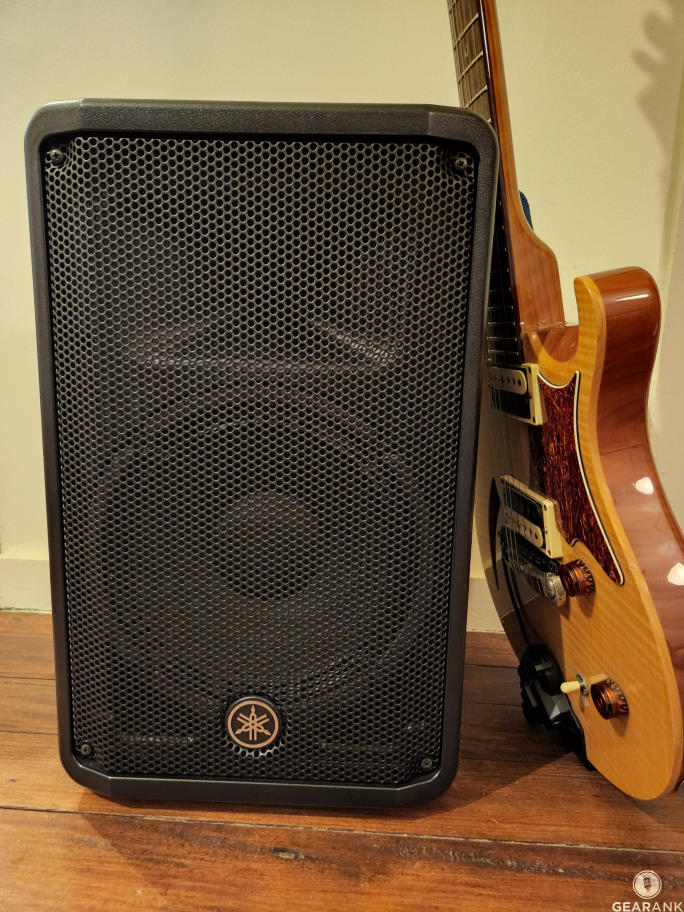
Yamaha DBR10 with a PRS SE Custom Semihollow to give you an idea of the size.
This powered PA speaker has a mixer and two channels, each with an XLR/TRS combo input and volume controls, but keep in mind that only one of the channels can accept a mic-level input (switchable between Mic/Line).
The second channel also has stereo RCA phono connectors for adding program music. I can confirm that you can use these simultaneously as the line input. There are better ways to do it, but if you can balance the volumes of these inputs, you could call it a 3-channel mixer.

Yamaha DBR10 Rear Mixer Panel
As standalone FOH speakers, they work well in smaller venues and medium-sized venues for styles that aren't loud or bass-heavy. Their sound is best described as clean, loud, and surprisingly full. They are viable concert speakers.
They provide reasonable bass for many styles, but if you want some real 'thump' or are in a larger venue, you'll want to pair them with the best PA subwoofer. The DBR10 has an excellent reputation for combining well with subwoofers, and the HPF switch works well for this purpose.
Although others say that this powered speaker is easy to scratch, I've only experienced a few minor ones. It's a good idea to at least get a 'Speaker Tote Bag' for a 10" speaker enclosure like this one made by Gator to keep those classy looks. That particular bag has worked well for me.
The Yamaha DBR series has been around since 2014 when they brought some of the DSP magic from their higher-priced DXR series to this more affordable range, and they've been quite popular and well-regarded ever since.
This fantastic, affordable, lightweight powered speaker sounds great and offers excellent versatility. It looks good and has been a reliable workhorse for many (including me), backed by Yamaha's 7 year warranty.
It's suitable for use everywhere from practice at home, on stage as a monitor or an instrument amp, as main powered speakers for smaller venues, or coupled with subwoofers in larger venues. I find it to be one of the best pa speakers when it comes to versatility and portability.
The power at such a light weight is the standout feature, making it suitable for a broader range of situations. There may be bigger, better, more expensive powered speakers out there, but at this weight, the DBR10 is in a class of its own.
This is one of the best PA speakers for those who need something portable.
Specifications
- LF Driver: 10" Cone, 2" Voice Coil Ferrite Magnet
- HF Driver: 1" Throat Compression
- Amplifier: Bi-amplified Class D
- Output Power Peak: 700W (500W LF, 200W HF)
- Output Power Continuous: 325W (260W LF, 65W HF)
- Frequency Response: 55Hz-20kHz (-10dB)
- Maximum Peak SPL: 129dB
- Crossover Frequency: 2.1kHz
- Enclosure: Plastic
- Mounting: Pole, Floor, Wedge
- Inputs: 1 x XLR/TRS Combo (Mic/Line) , 1 x XLR/TRS Combo (line only), 1 x Stereo
- Outputs: 1 x XLR
- Controls: Power Switch, 3 x Level Knobs, Mic/Line Switch, D-Contour (FOH, Off, Monitor), HPF Switch (120Hz, 100Hz, Off)
- Dimensions: 19.4" x 12.1" x 11.4"
- Weight: 23.2 lbs.
| Website | Source | *Rating Value |
| Gearank | Daniel Barnett | 98/100 |
| Sound On Sound | Paul White | 98/100 |
| YouTube | Gear It First | 96/100 |
QSC CP8 - 8" - 1000W
Cons
- A bit lacking on the bottom end - see the CP12 for more bass
Pros
- Highly versatile - works in all genres
- Also works brilliantly as both FOH and a Stage Monitor - at publication time is was the Highest Rated Powered Stage Monitor Under $500
- Pairs well with most subs - great with the QSC KS118
- Very solid build
QSC is a brand known for premium sound and build quality. Their speakers are widely considered among the best powered speakers for PA systems.
The CP8 lets you experience its brand of quality in a compact and affordably priced package.
QSC's renowned DSP lets you pick between presets for various applications and venues for ease of use.
Despite its smaller 8" LF driver compared to most in this price range, the bass is present enough to have a full-range sound. The selectable contour with bass roll-off makes it ideal for use with subwoofers.
Sound output is surprisingly loud for an 8" active speaker and it has a nice vibrant sound and crispy sparkle. But it does lack a little on the bottom end. But that's not a problem because it pairs nicely with sub-woofers, so for those occasions where you need to go deeper, you can. When properly implemented the CP8 gives you great sound quality and incredible clarity.
If you want to avoid dealing with subs, consider getting the CP12 instead, which, although having identical amplifiers, is noticeably louder at the bottom end.
The polypropylene enclosure is solid; in fact, I expect them to be still working just fine years from now, and it seems QSC does, too, which is probably why they provide such a long-lasting warranty, but don't forget to register with QSC straight away so you get the extra 5 years added on.
The CP8 is a great entry point into QSC's premium pro audio sound reinforcement brand. If versatility and projection are your priorities at this price point, the QSC CP8 is tough to beat.
Specifications
- LF Driver: 8"
- HF Driver: 1.4" Compression Driver
- Amplifier: Class-D
- Output Power Peak: 1000W (800W LF + 200W HF)
- Frequency Response: 56Hz-20kHz (-6dB)
- Maximum Peak SPL: 124 dB SPL @ 1m
- Enclosure: Polypropylene
- Mounting: 35mm Pole Socket, M8 Threaded Insert, Floor Wedge
- Inputs: 1 x XLR-1/4" combo (mic/line), 1 x XLR-1/4" combo (line only), 1 x 1/8" (aux)
- Outputs: 1 x XLR (mix out)
- Controls: Power, 2 x Gain, MIC BOOST Push Switch, 6-way Contour Selection Switch
- Dimensions: 16.2" x 10.7" x 10.1"
- Weight: 25.5 lbs.
| Website | Source | *Rating Value |
| Sound On Sound | Mike Crofts | 94/100 |
| Production Partner | Anselm Goertz | 97/100 |
The Best Active PA Speakers under $1000
QSC CP12 - 12" - 1000W
Cons
- No locking nut to hold the speaker when they are on speaker stands
- Few eq curve options at the back
Pros
- Excellent clarity
- Versatile - good for either FOH or stage monitors
- Good durability
- Portable
- Surprisingly loud
The QSC CP12 is a compact powered loudspeaker designed with portability in mind. It has a peak wattage of 1000 W and a Max SPL of 126 dB, making it loud enough for small venues or medium-sized conference halls.
It also features a built-in 2-channel mixer for single-box operation. This makes it an equally capable floor monitor or keyboard amplifier, in fact many consider it as one of the best stage monitors available. Only one channel can run at mic level gain, and the aux channel gain is shared with line level at input 1.
My experience with these 12 inch PA powered speakers is from a local venue I set up sound for. The speakers can handle a packed small venue with just two units. The versatility allowed the venue to use the same unit for their monitors. Calibration was a breeze, and the volume and clarity were good, even during rock gigs.
If you're looking for a compact but capable speaker with multiple uses like mains, monitors, or instrument amplification, the QSC CP12 is a good, versatile choice.
I recommend these for small to medium venues that need a clear-sounding speaker with good headroom and can handle more aggressive styles of vocals.
Specifications
- LF Driver: 12"
- HF Driver: 1.4"
- Amplifier: Class D Amplifier
- Output Power Peak: 1000 W peak, 800 W (LF), 200 W (HF)
- Frequency Response: 47 - 20 kHz(-10dB)
- Maximum Peak SPL: 126 dB
- Enclosure: Polypropylene
- Mounting: Wedge, Pole, Floor, Yoke Suspension
- Inputs: 1 x XLR-1/4" combo (mic/line), 1 x XLR-1/4" combo (line only), 1 x 1/8" (aux)
- Outputs: 1 x XLR (mix out)
- Controls: Power, 2 x Gain, MIC BOOST Push Switch, 6-way Contour Selection Switch
- Dimensions: 20.3" x 13.8" x 12.7"
- Weight: 30.3 lb.
| Website | Source | *Rating Value |
| Sound On Sound | Mike Crofts | 94/100 |
| Music Connection | Barry Rudolph | 92/100 |
| Church Production | Loren Alldrin | 95/100 |
Electro-Voice EKX-15P - 15"
Cons
- Fan can get noisy
- Power cable a bit flimsy
Pros
- Smooth, high-quality sound
- Great sound and build quality
- Can fill big venues with ease
The EKX-15p was designed to project low frequencies. Pairing a 15" woofer with a 1500W Class D Power amp, The EKX-15p can go loud and distortion-free.
This low frequency reproduction makes it great for DJs and musicians. It's clear enough for speech. It also does a great job of filling larger venues.
Electro Voice opted for a cleverly designed wood cabinet similar to classic speaker designs but with lighter materials to keep weight down.
You can choose between 3 presets: music, live, and club. You also have the option to save five user-programmable presets.
The variable speed fan keeps the speaker from overheating and potential burnouts. It can sense internal temperatures and automatically adjust the fan speed.
It's a simple speaker to set up and works well with different speaker stands and other mounting options.
The power cable may be fragile. This is reflected in other reports by owners but it can be easily replaced with a sturdier one. Another con is the fan. It gets loud at higher speeds.
It's a big speaker with big wattage and a great wooden baffle cabinet. At this price, it's among the best active speakers in terms of value. You can't go wrong with the brand and its reputation for sound AND build quality.
Specifications
- LF Driver: 15"
- HF Driver: 1.5"
- Amplifier: Bi-amplified Class D
- Output Power Peak: 1500W
- Output Power Continuous: Not Specified
- Frequency Response: 55Hz - 18KHz (-3 DB) | 44Hz - 20kHz (-10 DB)
- Maximum Peak SPL: 134 dB
- Crossover Frequency: 1.7 kHz
- Enclosure: 15 mm plywood with EVCoat
- Mounting: Pole
- Inputs: 2 x XLR-1/4" combo, RCA Input
- Outputs: 1 x XLR
- Controls: Master Volume, Input 1, Input 2
- Dimensions: 27" × 17" × 17"
- Weight: 53.9 lbs.
| Website | Source | *Rating Value |
| Sound On Sound | Mike Crofts | 85/100 |
| Pro Sound | Strother Bullins | 94/100 |
The Best Active PA Speakers under $2000
JBL Professional PRX815W
Cons
- Weighs heavy at close to 50lbs
- App has a learning curve
Pros
- Strong bass
- Easy to set up and connect multiple speakers
- Very loud with good headroom
- Great for outdoor gigs
JBL is one of the most popular brands for sound reinforcement, and the speaker model PRX815W is an excellent example of why people love this brand.
This powered speaker offers many features at a reasonable price. It has a 15" woofer, a 1500W amp, and modern features like Wi-Fi compatibility.
With Wi-Fi compatibility, you can use a dedicated app from your tablet or smartphone to wirelessly control the speaker's settings. You can easily adjust the EQ, delay, crossover, and other parameters, giving you more flexibility in tuning your sound to suit your venue and audience.
The speaker also has a DBX limiter that protects the unit from high-volume damage. The limiter ensures that the speaker does not clip or distort even at high SPL levels, so you can turn up the volume without worrying about damaging your speaker or compromising the sound quality.
The JBL Professional PRX815W is a versatile and reliable speaker with powerful and clear sound, making it a great addition to any setup. It can handle a wide range of music genres and applications, whether you need a main speaker, a floor monitor, or a side fill. The speaker is also easy to transport and set up, thanks to its lightweight and durable wood cabinet and ergonomic handles. It also integrates well with the typical audio equipment setup.
Overall, the JBL PRX815W offers excellent value for the money. It combines JBL's legendary sound quality with the latest technology and features to give you a great sounding and easy-to-use speaker. If you are looking for a speaker that can handle any gig and impress any crowd, the JBL PRX815W is an excellent choice.
Specifications
- LF Driver: 15"
- HF Driver: 1.5" Neodymium Compression Driver
- Amplifier:Class D Bi-Amped
- Output Power Peak: 1500W (750W LF + 750W HF)
- Output Power Continuous: Not specified
- Frequency Response: kHz(-10dB)
- Maximum Peak SPL: 50Hz-20khz (-10 dB) dB
- Crossover Frequency: 2 kHz
- Enclosure: Birch/Poplar
- Mounting: Pole, Wedge, Fly
- Inputs: 2 x XLR-1/4" Combo (Mic/Line), 2 x RCA (Stereo)
- Outputs: 1 x XLR (Mix out)
- Controls: 2 x Gain Knobs
- Dimensions: 27.6" x 17.5" x 14.1
- Weight: 47.5 lbs.
QSC KW153 3-way 15" - 2000W
Cons
- Too big and heavy for typical band setups
Pros
- Brilliantly suited to medium to large venue installation
- Very good at all styles of music
- Sounds great at all volumes.
- Excellent sound reproduction/clarity
The KW153 is another of QSC's top rated PA powered speakers, enjoying perfect ratings at almost all major retailers.
This high-output PA powered speaker has a three-way speaker design that can generate serious volume, sporting a 15" LF driver, a 6.6" MF driver, and a 1.75" tweeter.
Unlike the JBL SRX835P this is only bi-amped; however, the crossovers do their job, and there isn't any lack of mid or high-end response; even at high volume, you still get a great deal of detail and nuance.
I'm happy using these 15-inch 3 way powered speakers for any style of music, and I've seen reports of other audio engineers using them for orchestra and classical-style music, which shows just how versatile they are. This is one of the reasons the QSC KW53 is considered the best PA system for outdoor events.
This powered speaker is highly recommended if you want premium quality 3-way 15" house speakers for permanent installation or large venues.
Specifications
- LF Driver: 15" Cone
- MF Driver: 6.5" Mid Range Cone
- HF Driver: 1.75" Titanium Diaphragm Compression
- Amplifier: Bi-amplified Class D
- Output Power Peak: 2000W (1000W LF, 1000W HF)
- Output Power Continuous: 1000W (500W LF, 500W MF/HF)
- Frequency Response: 35 Hz – 18 kHz (-6dB) | 33 Hz – 20 kHz (-10dB)
- Maximum Peak SPL: 134dB
- Crossover Frequency: DSP Controlled
- Enclosure: 15mm Painted Birch Plywood
- Mounting: Pole, Fly
- Inputs: 1 x XLR/TRS Combo (Mic/Line), 1 x XLR/TRS Combo (Line), 2 x RCA
- Outputs: 1 x XLR (Line), 2 x XLR (Direct)
- Controls: Power, Gain A & B, Input Gain (0 dB / 12 dB / 24 dB / 36 dB), LF Mode (Ext Sub /Norm/DEEP), HF Mode (Flat/ Vocal Boost), Front LED (On /Off/Limit)
- Dimensions: 43.1" × 18.5" × 16.8"
- Weight: 87 lbs.
| Website | Source | *Rating Value |
| Audiofanzine | stompboxjon | 100/100 |
Things To Consider Before Buying Powered PA Speakers
-
The speaker cone size refers to the size of the LF (Low Frequency) Driver - AKA Woofer. Generally, smaller woofers tend to emphasize the mids, while bigger ones offer more bass response. Compact 8" loudspeakers work particularly well with sound sources that are not bass-heavy, like a simple vocal with acoustic guitar setup.
You'll need bigger speaker sizes for deep bass, especially if you're plugging in bass-heavy instruments into the signal chain, like keyboards, bass guitars, and drums. 10" to 12" PA speakers should be enough for most small group/band settings. The 12-inch powered speaker is the go-to size for most live performance venues.
On the other hand, DJs and Electronic Music enthusiasts prefer bigger 15" speakers for the extra low-end they provide. If you want more low-end, consider getting a PA subwoofer.
-
Since powered PA speakers have built-in amplifiers, you don't have to worry about properly matching the speaker to the amp like you would if you opted for passive speakers. This is an important distinction when deciding between powered vs passive speakers. Still, the best passive pa speakers have their own advantages, like the ability to mix and match drivers with amps.
The focus is on output power, a numerical representation of the headroom and projection capabilities of the built-in amplifier and speaker combination.
Manufacturers and retailers commonly list two types of power output ratings: Continuous (RMS) and Peak (Dynamic).
Continuous (sometimes interchanged with RMS) is a better representation of how powerful a speaker is because it specifies the wattage in which it can operate safely for long periods.
Peak (sometimes interchanged with Dynamic) refers to short volume/power bursts that speakers can handle. It points to the upper limit of what speakers can do and, as such, is not a good standard to use. 200 to 500 Watts of Continuous power should be enough for most small venues, while upwards of 500W are meant for medium to large venues.
Max SPL ((Sound Pressure Level) is also essential when matching speakers with venue size. The general rule is that the higher the max SPL rating, the more space the speaker covers. With these information, you can implement multiple speakers strategically to cover larger venues.
-
The integrated power amplifier inside powered speakers adds weight and some bulk; as such, they are generally heavier than passive speakers.. So it's important to consider weight and portability features, especially when you change venues regularly. Important speaker features like handle location and size should be considered; you want to avoid buying a great sounding speaker that you can't carry around, or you can't fit inside your vehicle.
While self-powered speakers are heavy, your overall rig will be lighter because you don't have standalone amplifiers. Considering the cables and Speaker Connector Types that you need is also important when using portable powered PA speakers, especially when connecting to additional speaker systems.
- Many powered speakers have built-in DSP (Digital Signal Processing), providing various advantages, including smart limiters to protect the speaker from overload/clipping. Some even use DSP to tweak the sound to match the acoustics of rooms, for the best sound quality and versatile placements. While it's better to do EQ adjustments on the mixing console, making adjustments at the speakers can be handy in certain situations and venues. Note that cheap powered speakers won't have this type of feature. Other features that are good to have include wireless audio streaming (convenient bluetooth audio streaming compatibility), deep bass and more. Some of the best portable PA system options and outboard also come with DSP functionality.
-
Some powered speakers can handle two or more inputs and have dedicated gain/volume controls, much like a Mixing Board. These speakers can double as a basic PA System for solo performers and singer-songwriters who play in smaller venues. While many of these mixers include two XLR/Line combo-sized inputs, one is usually only a line-level input, so check this carefully if you're looking to connect two microphones.
-
The more components a device has, the risk of problems increases; in that sense, Passive Speakers are more durable. Still, modern build quality continues to improve, so much so that reliability is not much of a concern regarding powered speakers. Even Line Array Speakers are now excellent and reliable. Still, regardless of how solid the exterior is, there's no substitute for careful handling and transport. No matter how reliable your speakers are, don't use them above their specifications, this way you can prevent speaker damage and Crackling from Speakers.
What is the ideal LF Driver / Speaker Cone Size?
What Output Power Rating and Max SPL do I need?
What about portability?
What is DSP and do I need it?
Do I need a built-in mixer?
How do I know if a Powered PA Speaker is reliable?
Best PA Speaker Selection Methodology
The first edition was published in 2016, and the current edition was updated on Feb 8, 2024.
For this edition, we conducted a survey of major retailers in the USA and placed 88 active speakers on our short-list for closer examination - you can see them in the Music Gear Database. We only included models priced below $2,000.
Next, we gathered relevant store ratings, written reviews, video reviews, and forum discussions about each one - including the latest market feedback. We processed over 16,100 of these data sources using the Gearank Algorithm, which gave us the rating scores out of 100 that we used to rank the powered speakers appropriately. The highest rated of them are featured in this guide divided into three main categories: Sub $500, Sub $1000, and Sub $2000, along with a budget-friendly option. As always, we've included detailed descriptions and specifications for each powered speaker and their strengths and weaknesses as reported by users. For more information about our methods, see How Gearank Works.
For further discussions or to recommend your favorite powered PA speaker to other readers, scroll down to the comments section.
About the Author and Contributors
Here are the key people and sources involved in this guide's production - click on linked names for information about their music industry backgrounds.
Lead Author & Researcher
Raphael Pulgar
I've been an audio engineer for 20 years specializing in rock and metal recordings. I also play guitar and produce original music for my band and other content creators.
Although I'm more of a studio engineer, I have years of technical and creative experience with live sound. I have setup and used some of the best PA speakers and systems, and I've also taught seminars on how to set them up for live performances.
Contributors
Daniel Barnett: Yamaha DBR10 Review.
Jerry Borillo: Research and illustration.
Jason Horton & Alexander Briones: Editing.
Media
Main/Top Image: Created by Gearank.com using photographs of the Mackie Thump15A, QSC K12.2 Powered PA Speaker and Electro-Voice ZLX-15BT Powered PA Speaker.
The individual product images were sourced from websites, promotional materials or supporting documentation provided by their respective manufacturers except for the additional Yamaha DBR10 photos which were taken by Daniel Barnett.



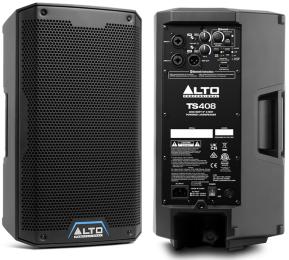
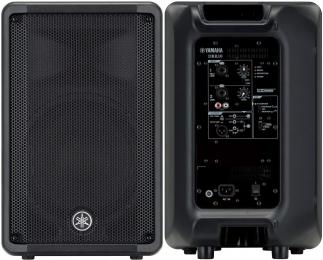
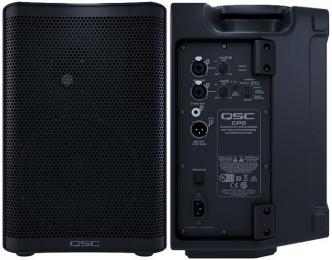
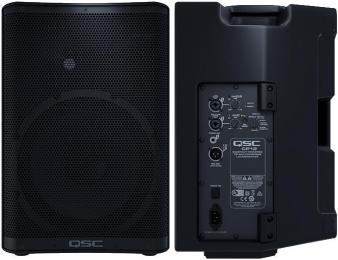
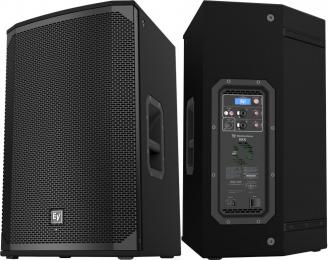
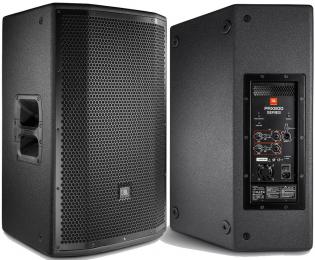
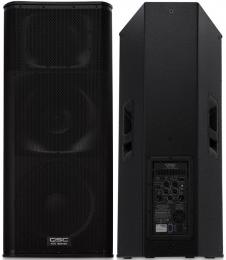
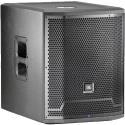
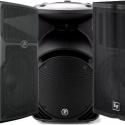
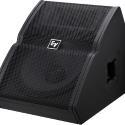
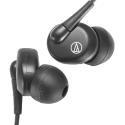
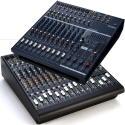
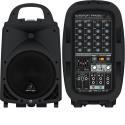
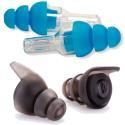
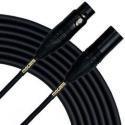
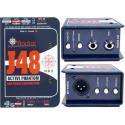
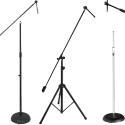
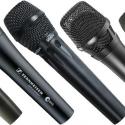
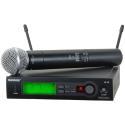
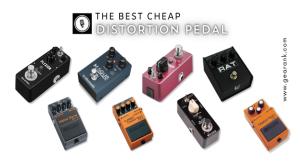
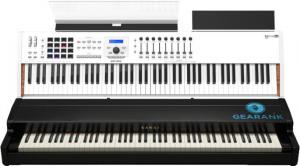
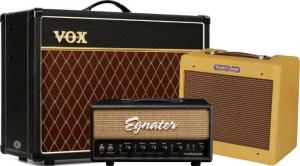
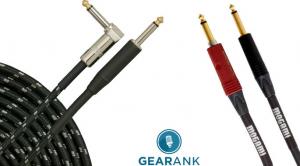
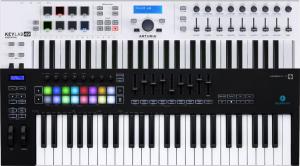
Comments
pretty cool info...... i
Submitted by fatz (not verified) on
pretty cool info...... i decided on jbl srx 815p at 1799...... owned them 7 years now w/ no issues..... the qsc 153 i do see everywhere as great for a full band doing small shows..... either one is good :). thanks
Hi Raphael, Which portable
Submitted by Jay (not verified) on
Hi Raphael, Which portable speaker/ mix for possible outdoor and indoor use?. My go to genre is house music / the Orchestral Ibiza versions. So I wanted something that not only had the bass and volume but the reverb and acoustic, in order to carry that euphoric sound from the box but also the mic. If there're any of these options are suitable for my needs it would be good to know your thoughts. TIA
Hello Raphael, thanks for
Submitted by laurent agopian (not verified) on
Hello Raphael, thanks for your post
please, can you say to me which activ full range cab is good for an upright bass ? I have two differents preamp to play : minnow trickfish and lehle basswitch iq di.
In 12 or 10 "
thanks
Hello Laurent,
Submitted by Raphael Pulgar on
Hello Laurent,
The QSC KW153 - 15" is my recommendation for upright bass. The speaker size is perfect for reaching lower frequencies and making most of the depth of the upright's sound without flubbing out. 10" and 12" can work if you're after the lower midrange tonality but they might not have enough excursion to push the air needed to sit the bass in the mix.
-Raphael
I am currently using a pair
Submitted by Eric (not verified) on
I am currently using a pair of Harbinger 2312 speakers and an S12 subwoofer for my electronic drum kit. It’s plenty loud but thinking of upgrading for more low end and clarity. Would it it better to use two 15” and ditch the subwoofer? Budget is an issue, I am trying to keep it around $1,200.00. I don’t know if it matters but I use a Yamaha MG16XU mixer. I was thinking of getting a pair of the Yamaha DBR15’s, what do you think?
For a Electric Drum kit, I
Submitted by Jeff B (not verified) on
For a Electric Drum kit, I think your setup is fine. Just add another S12 to your 2312's and you should have have plenty of low end bass for your kit. Especially if your on a budget. If not QSC. IMHO.
The following speakers came
Submitted by Jason Horton on
The following speakers came off the recommended list above when we published the November 2022 Edition:
Things to consider- Do they
Submitted by George (not verified) on
Things to consider- Do they sound good. I am really surprised that electrovoice speakers are not on this list while some clearly inferior products are. I have four electrovoice Elx 112ps for monitors and two Elx 115ps for mains coupled with a Yamaha digital mixer. Nirvana! If you run everything flat using Shute mic’s you will have zero feedback and it Weill sound fine. If you know what you are doing it will sound great. The electrovoice powered speakers are really good. For the price they are hard to beat. I am puzzled why they don’t show up often on the best of reviews.
Publication of our March 2022
Submitted by Jason Horton on
Publication of our March 2022 Edition resulted in the following speakers coming off the recommended list above, but you can still see our analysis of them:
I thought J read where you
Submitted by Michael J Scarione (not verified) on
I thought J read where you had Martin XP12 as top speaker but I see here it did not make your list. How do the Martin speakers rate?
The Martin Audio Blackline
Submitted by Jason Horton on
The Martin Audio Blackline XP12 isn't widely available in the USA so it didn't meet the criteria to be short-listed for selection - that means we also haven't published a rating for it.
Have you guys run into the
Submitted by Mike (not verified) on
Have you guys run into the "Protect Mode 4" issue on newer QSC K's?
There seems to be a lot of people experiencing an issue with the newest QSC firmware (1.2.0.3200; failures are mostly in K10.2s, for some reason). Users report that with properly staged gains and output levels (and with speaker gain at noon in reasonable room temperatures) they're going into a failure mode, mid-gig, that turns them off and runs a test (which passes) until they're reset.
Users who've spoken to QSC say they will not roll back to earlier firmware, and some are saying that firmware will be updated to the troublesome version when any repairs are done.
I have some workhouse K12.2s and was considering a pair of K10.2s until I read about this.
Have you guys into the
Submitted by Mike (not verified) on
Have you guys into the "Protect Mode 4" problem that seems to be plaguing a lot of newer K10.2s (and supposedly some K12.2s)? This is a real problem for a lot of people... with appropriate signal in, gain at noon and ambient room temps, these things randomly turn off and require a reset procedure (that involves letting it play a 100Hz tone). Not what you want to happen on gigs.
Just curious as to how/why
Submitted by Robert (not verified) on
Just curious as to how/why EAW (Eastern Acoustic Works) speakers never seem to make it into your ratings.
Hi Robert,
Submitted by Jason Horton on
Hi Robert,
I was wondering when someone would ask us about EAW - it looks like you're the first!
Although many of their speakers are priced above the current limit of $2000 for this guide, they do have some like the JF Series which do technically qualify.
The reason they have not appeared to date, and haven't even made it onto any of our short-lists, is because they're not widely available from US based retailers so they don't have enough people rating and reviewing them for us to confidently rate and recommend them.
Although Full Compass does sell them, you can't get them at Sweetwater, Amazon, Musicians Friend, Guitar Center, AMS, zZounds, Sam Ash etc.
EAW is on our radar, and if they become more popular they will definitely make it onto our short-lists and possibly even get recommended in one or more of our guides.
Jason.
Publication of our May 2021
Submitted by Jason Horton on
Publication of our May 2021 Edition resulted in the following speakers coming off the recommended list above, but you can still see our analysis of them:
Absolutely love my Yamaha
Submitted by EricDano (not verified) on
Absolutely love my Yamaha DBR10s. I use them for monitors, or mains. They just are great sounding.
Hi. David here.
Submitted by David Williams (not verified) on
Hi. David here.
After about a 2.5+ decade hiatus of music involvement (bands & sound engineering), recently been helping some old friends; so, kinda getting back into it.
Back in the day, usually used some sort of tri'amp system, in stereo. Usually consisting of either: 2" high horns, 12" speaker mids, & 18" lows/subs(or some similar combo), w/a separate rack of amps to push the spkrs.
So, with no stores in my area to compare pa systems, I'm curious...
with these newer 'Powered' Pole systems, which make & model is the Best Bang for the Buck, that will compete, meet, or, if possible, exceed the Full Wall of Sound produced from the older Passive Spkr systems ? This would most likely be used for smaller to mid sized venues, gigs, parties, etc; say, from 100's to 1,000's of peeps.
I'm seriously considering something for my own future endeavors, &, could see the plus of not having to lug around a separate amp rack & saving some time from all the connections thereof. So..
TIA, in letting me know if there's a Powered Pole System that will meet the above needs shared.
Peace !
David W
Hello David Williams
Submitted by Robert (not verified) on
Hello David Williams
As someone who has been on both sides of the speakers (musician & Sound Man) for almost 45 years, I can tell you, you're in for a VERY pleasant surprise. Yes, for many years I too worked with the big "wall of sound" (as you put it) systems (and the truck required to move those beasts!). The newer "modular?" systems now (powered mains matched with one or two powered subs/mixing board) are not only a million times easier to pack and move, but believe it or not, also actually also SOUND much better!! Speaker and amplifier technology has come an incredibly long way in the past 30 years. You're going to have a much better sound field, much cleaner and tighter sound, both bottom end and top. And even a good quality 16 channel board is going to be half the size and weight on the old ones (and also better sound quality). Just make sure you have your reading glasses and a pen light ready for working on those :-)
Hi David,
Submitted by Raphael Pulgar on
Hi David,
It seems that times have indeed changed over the last few decades as many sound system providers have made the jump towards powered (active) speakers and subwoofers. Venues have also changed as larger open air venues utilize larger, mostly active line array systems in conjuction with delayed auxilliary speakers in other parts of the venue to fill in the sound and utilizing powered subwoofers in optimally placed locations (sometimes floated/suspended).
In my brief experience working with a sound system rental service, a 1,000 capacity indoor venue used a combination of line array system speakers, tripod mounted delayed auxilliary speakers at the halfway mark of the venue and two to three subwoofers. Smaller events only need as much as 2 powered 12"/15" Main speakers and 1 subwoofer. This smaller setup has worked for me even with louder modern metal bands (believe me they can get loud!)
So if you're looking to invest, I suggest you focus on getting good speakers as your top priority as these influence the overall quality of your rig. Having powered speakers also allows for better scaling should you want to expand to having line arrays, multiple subs and monitors, etc.
So a good starter system for a small venue would be 2 powered mains, 2 powered floor wedges, a subwoofer and a mixing console. The great thing about this system is that because the speakers are powered, you wouldn't have to worry too much about impedances and amplifier-speaker matching (though you do have to be aware of your system's current draw on your electrical line!).
To get you started, here are some of our published guides:
Powered speakers (This guide. Just reposting this for reference)
Powered floor monitors
Subwoofers
For mixers, any mixing console can do. What's important is you have enough channels for all input sources. If you plan on eventually expanding your setup, go for a mixer with more inputs than what you currently need.
There's still so much more from this though such as speaker cables, mics and whatnot but I think this is enough information to get you up to speed for now.
-Raphael
Noticed that the Mackie SRM V
Submitted by Jim (not verified) on
Noticed that the Mackie SRM V-Class speakers have not been rated yet. Recently purchased one of these (SRM210) and have been very impressed with the sound and functionality.
We only have preliminary
Submitted by Jason Horton on
We only have preliminary ratings for each of the 10", 12" and 15" versions which we haven't published yet.
Bringing them out in January this year was unfortunate timing for Mackie and review and rating sources are limited at the current time, but we hope to publish something on the series before the end of the year.
UPDATE: We have since
Submitted by Jason Horton on
UPDATE: We have since published ratings for the SRM V-Class speakers which you can see here.
Today we removed the QSC
Submitted by Jason Horton on
Today we removed the QSC KW153 from this guide due to a price increase putting it above the $1500 price limit.
how about Yorkville powered
Submitted by chris stoyan (not verified) on
how about Yorkville powered speakers
So far only their PS15P 15
Submitted by Jason Horton on
So far only their PS15P has made it onto our shortlist, but it does have decent ratings which you can see here.
Today we removed the
Submitted by Jason Horton on
Today we removed the following speaker due to a lack of availability: Yamaha DXR12.
Boycott speaker/amp companies
Submitted by Joe (not verified) on
Boycott speaker/amp companies that refuse to publish their continuous/RMS ratings!! In the past 2 weeks of digging into PA systems I've found peak:continuous ratios of 2:1 4:1 5:1, even 10:1!! Yup, one company rated their speaker as 2,000 watts peak and 200 continuous!
Knowing what a speaker or amp can handle for a millisecond is absolutely useless.
As a result of our August
Submitted by Jason Horton on
As a result of our August 2019 update the following speakers came off our recommended list - but you can still read our analysis of them:
The negative comments about
Submitted by joe (not verified) on
The negative comments about JBL are hilarious. The 5" and 8" series are widely regarded among the best if not the best in their class.
Speaking of which, why aren't 5" speakers included here?
I was hoping to see something
Submitted by Gator (not verified) on
I was hoping to see something about the Peavey RBN-112's with the ribbon tweeters. I did not find them in the database either, just the Dark Matter 112. Does anyone have experience with these?
The Peavey RBN 112 has never
Submitted by Jason Horton on
The Peavey RBN 112 has never made it onto our short-list for this guide over several major updates, mainly due to a lack of popularity rather than its ratings, however I've published our rating of it today for all to see: Peavey RBN 112.
I have some real nice powered
Submitted by Kerwin (not verified) on
I have some real nice powered speakers but am not seeing the samson brand is that not good in ratings?
Samson are a good brand for
Submitted by Jason Horton on
Samson are a good brand for many things however they haven't yet had high enough ratings to make it onto our short-lists for powered speakers although their Auro X15D is a candidate that might make it onto our recommended list at the next update of this guide.
BTW you can look up all Samson products we've rated by going to the Music Gear Database.
So in conclusion which ones
Submitted by Dj Salsomano G (not verified) on
So in conclusion which ones are better for a 400 ppl venue. The Bose F1 or the QSC 12K2 or the RCF evox 12?
I have no idea why RCF didn't
Submitted by Brian Dennis (not verified) on
I have no idea why RCF didn't make the cut! I demoed the 12"Hd32amk4 against the qsc12k.2 Qsc got whooped!!I bought 2 RCF and get compliments from QSC owners!!
A pair of any of those aught
Submitted by Jason Horton on
A pair of any of those aught to be fine however I think you'd get the best value out of the QSC K12.2 based on all the research we've done.
As a result of our December
Submitted by Jason Horton on
As a result of our December 2017 review of the Powered PA Speaker category we removed several items from this guide but you can still read about them:
What constitutes small-medium
Submitted by Mark (not verified) on
What constitutes small-medium size venues in these reviews?
With so many factors to
Submitted by Alexander Briones on
With so many factors to consider, there's really no set standard for determining specific size category.
These factors include actual venue size, audience headcount, open air or enclosed, environmental noise, venue acoustics and many more.
But to answer your question, most will agree that small venues include coffee shops, bars, small restaurants and conference rooms. On the other hand, medium sized venues include enclosed auditoriums, churches, small gardens, and other venues that have a head count of less than 500.
You missed all the Cerwin
Submitted by Marco Time (not verified) on
You missed all the Cerwin Vega models. In particular, the CVA-28, the CV P1000X and CV P1500X. I also agree with the other posts, you did not even consider JBL and they have the best Mids and Highs, plus value.
The systems you mentioned
Submitted by Jason Horton on
The systems you mentioned were considered, they just didn't rate highly enough to make our recommended list. You can click here for the JBL and Cerwin Vega speakers, along with their Gearank scores, that made it to our short-list in the Music Gear Database.
I have Yamaha dbr10 and it is
Submitted by Peter Houtman (not verified) on
I have Yamaha dbr10 and it is brilliant. But looking at behringer b112d, and not too concerned about quality of sound, don't really know how much potential loudness would suffer (quoted EPL only 113db, much lower than the others on the list).
Alto TS215 Active 15" Speaker
Submitted by Burton Brown (not verified) on
Alto TS215 Active 15" Speaker VS.
Studiomaster Drive 15A/6A 15" Active
Hi - I'm looking for an upgrade from my Alto TX15 range to either of the above without breaking the bank tooo much. Can you possibly give me a rating and a recommendation if at all possible?
Thanks.
We have provided a rating for
Submitted by Jason Horton on
We have provided a rating for the Alto Professional TS215, however we have not rated the Studiomaster Drive 15A/6A because it doesn't meet our current availability criteria for the United States.
has to be sponsored by qsc or
Submitted by Ike (not verified) on
Has to be sponsored by qsc or something, because the jbl prx are a great speaker, I have been abusing the heck out of some eon g2s for over 10 years! 2 gigs a week, never flinched, never had to repair, all original drivers, that says something, just get protective bags, whichever speaker you decide on.
As has been pointed out
Submitted by Jason Horton on
As has been pointed out previously in this discussion, no manufacturers, including QSC, have paid any money or provided any benefit of any kind to us for anything we have done on Gearank.com.
In fact last year we removed all banner and display advertising (we were using AdSense) from this website. That means there is no possibility of us receiving money even indirectly from those companies via Google/AdSense.
At the current time our only source of revenue is from the retailers we link to - at the moment that includes Sweetwater and Amazon.
All of our product recommendations are guided by a scientific process involving statistical analysis of market sentiment using our proprietary Gearank Algorithm.
An overview of this is explained in How Gearank Works.
JBL SRX & FBT speakers will
Submitted by Paul (not verified) on
JBL SRX & FBT speakers will blow most of this tip 10 list out of water for Power & bottom end . Try before you buy.
wow no love for the Alto
Submitted by Djimbe (not verified) on
Wow no love for the Alto Blacks OR TrueSounds? both of those series rank up there with QSCs ang EVs and mop the floor with JBL. I did a H2H in store with 5 jazz musicians with total over 175 years playing experience and they were hands down the winner playing anything with real instruments in it... ESPECIALLY in price/performance comparison!
If you would like the results
Submitted by Jason Horton on
If you would like the results of your Head to Head comparison to be included in the data set we use when we next update this guide, then write a report/review detailing your results on one of the popular music gear review sites or forums.
To get an understanding of our methods please read How Gearank Works.
Pages